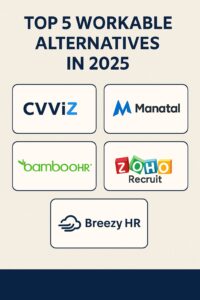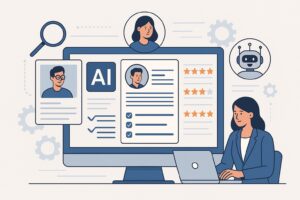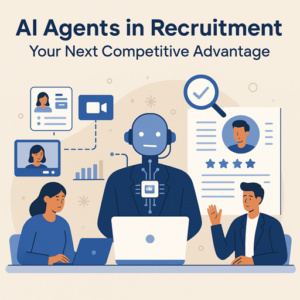The healthcare industry is facing a critical challenge—an alarming shortage of skilled professionals.
According to a report by the World Health Organization, the sector is projected to face a shortfall of 10 million workers by 2030.
The urgency to bridge this gap efficiently and cost-effectively has led to the widespread adoption of Applicant Tracking Systems (ATS). Over the past decade, ATS software has transformed recruitment across industries, and its role in medical hiring has become indispensable.
With the ability to automate time-consuming tasks, expedite hiring, and facilitate data-driven recruitment, ATS is poised to revolutionize healthcare staffing in 2025. In an industry where every hire impacts patient care, integrating ATS is no longer optional—it is a necessity.
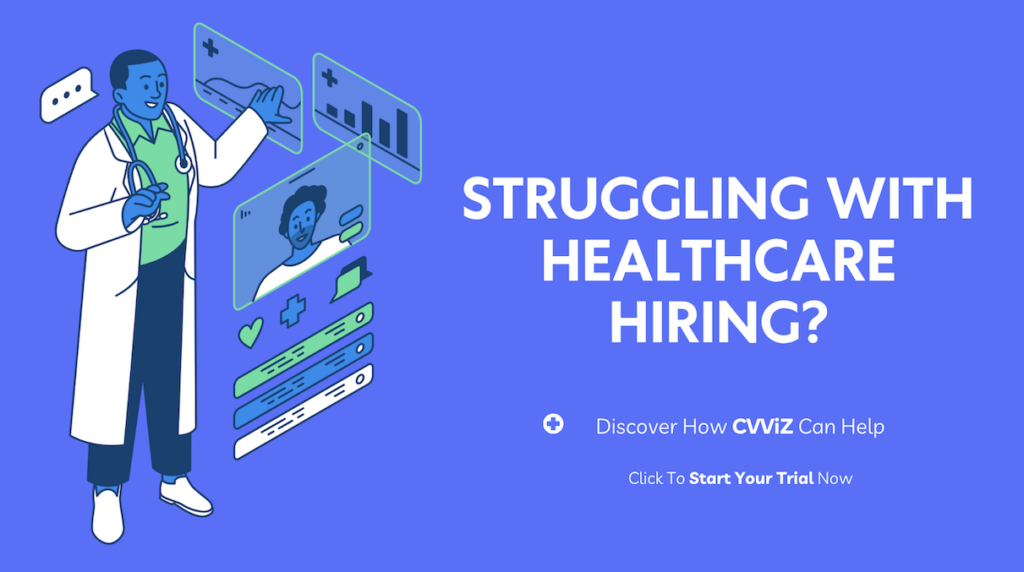
The Growing Need for ATS in Healthcare Staffing
As healthcare continues to face mounting staffing challenges, the Applicant Tracking System (ATS) has become an indispensable tool for recruitment teams. But before we dive into the solutions, let’s first discuss the challenges faced by hiring teams in the Healthcare industry.
Healthcare organizations worldwide face several recruitment challenges, including:
- High turnover rates due to burnout and demanding work conditions
- Prolonged hiring cycles affecting patient care and operational efficiency
- Increased compliance requirements for hiring licensed and certified professionals
- A limited talent pool exacerbated by workforce shortages
An ATS can address these issues by streamlining medical recruitment, improving candidate experience, and ensuring compliance with healthcare regulations.
Why An Applicant Tracking System Is Essential for Healthcare Hiring
1. Streamlining Healthcare Recruitment
Efficient healthcare hiring demands speed and accuracy. ATS software automates repetitive recruitment tasks, such as job postings, resume parsing, and interview scheduling, allowing hiring teams to focus on evaluating the right candidates.
Streamlining recruitment workflows is a game-changer in a sector where staffing gaps can directly impact patient care. Applicant tracking systems ensure that open positions are filled faster, reducing administrative burdens on HR teams and ensuring hospitals and clinics operate smoothly.
2. Addressing Healthcare Talent Shortages
With a projected shortfall of 10 million healthcare professionals, organizations must proactively attract and retain top talent. ATS solutions offer data-driven recruitment strategies that:
- Identify and engage qualified professionals
- Expand the talent pool by sourcing passive candidates
- Use AI-powered matching to shortlist the best-fit candidates
- Enhance employer branding through consistent and strategic communication
By leveraging these tools, healthcare organizations can mitigate staffing shortages and maintain operational efficiency. Additionally, ATS solutions help in building a talent pipeline, ensuring that organizations are prepared for future hiring needs and can respond swiftly to workforce demands.
3. Enhancing Candidate Experience
A smooth healthcare recruitment experience can make a significant difference in attracting top medical talent. Using ATS software for healthcare hiring enhances the candidate experience by:
- Simplifying the application process
- Providing real-time updates and transparent communication
- Reducing time-to-hire and making offers faster
- Personalizing interactions with automated engagement tools
This streamlined approach improves employer branding and increases the likelihood of retaining top candidates. When job seekers experience an efficient hiring process, they are more likely to accept offers and recommend the organization to others, leading to a stronger talent network.
4. Improving Compliance and Workforce Management
Healthcare hiring must adhere to strict legal and regulatory requirements. ATS solutions help organizations maintain compliance with healthcare regulations by:
- Centralizing candidate data and documentation
- Tracking certifications, licenses, and background checks
- Ensuring adherence to Equal Employment Opportunity (EEO) and healthcare labor laws
- Providing audit trails for compliance reporting
With these features, applicant tracking systems reduce compliance risks while improving workforce planning. It also helps in maintaining records for future reference, ensuring that the organization remains aligned with industry regulations and is prepared for audits or policy changes.
5. Reducing Hiring Costs
By automating and optimizing healthcare recruitment, ATS software significantly lowers the cost per hire. Organizations can cut expenses related to job advertisements, manual screening, and administrative tasks, freeing up resources for other critical healthcare operations.
Additionally, ATS platforms leverage AI-driven talent matching to ensure the right candidates are selected early, reducing turnover rates and associated rehiring costs. By optimizing recruitment workflows and minimizing inefficiencies, ATS helps organizations allocate their budgets more effectively.
Key Features Of Applicant Tracking System Relevant To Healthcare
An ATS simplifies the complexities of healthcare workforce management, helping organizations quickly identify and hire qualified professionals. By optimizing recruitment workflows, hiring teams can focus on building a strong foundation with top talent.
1. Automated Recruitment Workflows
ATS software automates candidate sourcing, resume screening, and interview scheduling, saving valuable time for recruiters and ensuring an efficient hiring process. Automation reduces delays and ensures that each stage of recruitment moves forward seamlessly.
2. AI-Powered Candidate Matching
AI-driven ATS solutions analyze resumes, match skills with job requirements, and rank candidates based on suitability, reducing human bias and improving hiring accuracy. These intelligent recruitment algorithms help recruiters make faster, data-driven decisions.
3. Real-Time Communication and Notifications
Modern ATS platforms provide automated email and SMS updates, keeping candidates engaged throughout the hiring process. This feature ensures a smoother candidate experience and reduces drop-off rates, improving overall hiring success.
4. Centralized Data Management
A healthcare ATS consolidates candidate information, applications, and compliance documentation in one platform, ensuring easy access and tracking. This data-driven approach enhances decision-making and allows recruiters to optimize their hiring strategies for better workforce planning.
5. Customizable Job Postings and Career Pages
ATS solutions offer customizable job postings that align with an organization’s branding and attract the right candidates efficiently. Well-designed career pages integrated with ATS ensure better candidate engagement, improving the likelihood of applications from highly qualified professionals.
6. Predictive Analytics for Workforce Planning
Healthcare organizations can leverage ATS analytics to anticipate staffing needs, monitor recruitment trends, and adjust hiring strategies proactively. Predictive analytics provide insights into talent availability, helping HR teams stay ahead of potential staffing shortages and workforce disruptions.
7. Mobile Accessibility
As more healthcare professionals rely on mobile devices, ATS platforms offer mobile-friendly applications, allowing candidates to apply and track their application status from their smartphones. This accessibility ensures a wider reach and a higher application rate, making the recruitment process more efficient and convenient.
Choosing the Right ATS for Healthcare Organizations
1. Industry-Specific Features
Select an ATS designed for healthcare, offering:
- License and certification tracking
- Compliance with healthcare regulations
- Shift scheduling integration
- Telemedicine hiring support
These features are essential for streamlining healthcare recruitment, avoiding future hiccups, and ensuring faster hiring.
2. Seamless Integration with Existing Systems
Ensure that the ATS integrates with HR, payroll, and workforce management systems for a unified hiring approach. A well-integrated system reduces redundancies and improves efficiency by synchronizing data across departments.
3. User-Friendly Interface and Customization
A user-friendly ATS with customizable workflows enhances adoption rates and efficiency among recruitment teams. The ability to tailor the platform to specific hiring needs ensures a better recruitment experience and allows organizations to optimize hiring processes.
4. AI and Automation Capabilities
AI-powered ATS solutions improve talent matching, automate repetitive tasks, and offer predictive insights for workforce planning. Automation ensures consistency in hiring practices and minimizes human errors, improving overall recruitment efficiency.
5. Compliance and Data Security
Choose an ATS that guarantees:
- HIPAA compliance for sensitive data protection
- Secure storage and encryption of candidate information
- Audit trails for regulatory adherence
- GDPR compliance for handling candidate data ethically
6. Scalability and Future-Readiness
An ideal ATS should be scalable, adapting to evolving healthcare staffing needs and recruitment trends in 2025 and beyond. As workforce demands shift, the ATS should be capable of handling increased recruitment volumes and changing job market dynamics.
7. Vendor Support and Training
A reliable ATS provider offers:
- 24/7 customer support
- Regular software updates
- Training resources for recruiters and HR teams
- Customization support to match organizational needs
Ensure the vendor helps you maximize the benefits of your ATS.
By keeping these factors in mind, healthcare firms can select the ideal ATS to address healthcare talent shortages, streamline recruitment, and build a stronger workforce.
Conclusion
The healthcare industry cannot afford to overlook the transformative potential of ATS solutions in 2025. By streamlining hiring processes, improving candidate experiences, and ensuring compliance with healthcare regulations, applicant tracking systems empower healthcare organizations to build a resilient workforce.
Investing in modern ATS software or AI recruiting software will not only enhance efficiency but also drive long-term success in healthcare staffing. In a rapidly evolving landscape, where talent shortages and regulatory demands continue to rise, an ATS-driven recruitment strategy will be the key to sustaining quality patient care and operational excellence. With the integration of ATS software, healthcare institutions can ensure that they not only meet today’s hiring challenges but are also well-prepared for the workforce demands of the future.
